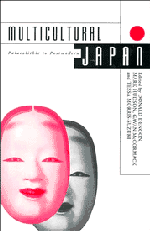Book contents
- Frontmatter
- Contents
- List of Figures and Tables
- List of Contributors
- Abbreviations
- Introduction
- Part 1 Archaeology and Identity
- Part 2 Centre and Periphery
- 5 A Descent into the Past: the frontier in the construction of Japanese history
- 6 The Place of Okinawa in Japanese Historial Identity
- 7 Ainu Moshir and Yaponesia: Ainu and Okinawan identities in contemporary Japan
- Part 3 Contact with the Outside
- Part 4 The Japanese Family
- Part 5 Culture and Ideology
- Afterword: Diversity and Identity in the Twenty-First Century
- Index
5 - A Descent into the Past: the frontier in the construction of Japanese history
Published online by Cambridge University Press: 05 November 2011
- Frontmatter
- Contents
- List of Figures and Tables
- List of Contributors
- Abbreviations
- Introduction
- Part 1 Archaeology and Identity
- Part 2 Centre and Periphery
- 5 A Descent into the Past: the frontier in the construction of Japanese history
- 6 The Place of Okinawa in Japanese Historial Identity
- 7 Ainu Moshir and Yaponesia: Ainu and Okinawan identities in contemporary Japan
- Part 3 Contact with the Outside
- Part 4 The Japanese Family
- Part 5 Culture and Ideology
- Afterword: Diversity and Identity in the Twenty-First Century
- Index
Summary
‘TimeSpace’ and Japanese History
In an article published a few years ago, Immanuel Wallerstein wrote of the need to reconsider our notions of ‘TimeSpace’ in history. ‘TimeSpace’ is, I feel, a rather uncomfortable word: the language of a social scientist trying to borrow physicist's clothes. But the point which Wallerstein's article made was an important one. His argument was that the way in which we carve up time for the purposes of study is inseparably connected to the way in which we carve up space. Our conventional divisions of time and space, Wallerstein suggested, can no longer be regarded as given and absolute, but need to be opened up to critical examination. It is necessary to ‘start down a very difficult, very unsettling road of questioning one of the bedrocks of our intelligence, our certainties about space and time. At the end of the road lies not simplicity but complexity. But our geohistorical social systems are complex; indeed, they are the most complex structures in the universe.…’
Wallerstein's comments fly in the face of our commonsense perception of things. In the humanities and social sciences (unlike the abstruse world of advanced physics) time and space seem at first glance to be clearly distinct dimensions of reality. Time, to put it crudely, is the realm of the historian; space the realm of the geographer. But a little reflection shows that matters are not as simple as this.
- Type
- Chapter
- Information
- Multicultural JapanPalaeolithic to Postmodern, pp. 81 - 94Publisher: Cambridge University PressPrint publication year: 1996
- 6
- Cited by



